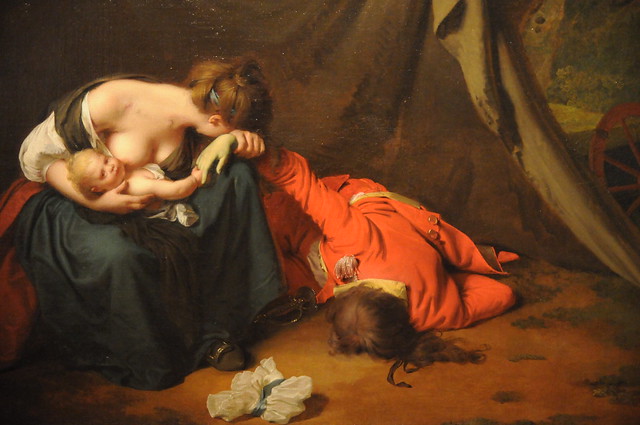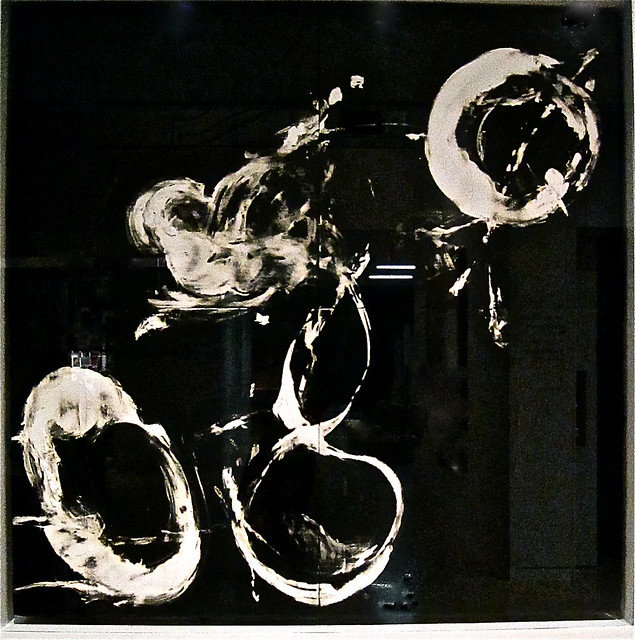I learned about “Take Six” from a musician friend who plays piano for the ballet class following mine. After class last week, I asked if he had any gigs coming up and he informed me of this innovative performance happening at the UMMA. On Saturday, February 17th, the museum held a musical progressive called “Take Six: New Jazz Compositions.” The museum was staged with six musical sets; six combinations of musicians played six original compositions inspired by six works of art in the University’s collection. The audience progressed from stage to stage at ten minute intervals, experiencing an hour’s worth of varied pieces. A kind of musical chairs, literally. Better yet, the set repeated itself four times throughout the afternoon. So if you missed any composition in the rotation, there was opportunity to catch it a second, third, or fourth time. Now that’s some repetitive Phillip Glass stuff right there.
I stayed for one full round of playing. Because of that, however, I think I missed the full affect of the progressive. The pieces remain the same, yet each iteration is unique in its rendition. The spaces the sets occupied included the Apse near the main entrance, the Forum near the gift shop, the Commons across from Angell Hall, and two floors of the Vertical Gallery near the DialogueTable. It would have been ideal to stage the performances beside the pieces that inspired them, but that would have been spatially challenging, especially since the last is no longer on display.
A progressive is a curious and interactive manner of experiencing artwork in its various forms. The performance format inspired dynamic conversation both between the audience and the musicians, as well as the musicians and the artists each chose as his muse. Instrumental reflections of brushstrokes and color pallets included drums, piano, bass, saxophone, clarinet, flute, trombone, and more. The combinations were written and performed by students and faculty from the School of Music’s Jazz Department.
The entire project was clearly a demonstration of strong talent and commitment. It seemed to be hard work to prepare, but a breeze to partake in. All the audience had to do was heed the shepherd’s call and meander with the flock. Easy following, easy listening. Personally, I truly enjoyed the event. Wandering about the art museum with the soundtrack to my visual experiences playing aloud for all to hear, what better way to spend a Saturday afternoon?
Below are images of the six auricular-visual pairings, to give you an idea of what you can’t see or hear from where you’re sitting.

Boyhood of Lincoln by Eastman Johnson
on view in the gallery of European & American Art
Inspired The Boy Lincoln by Keaton Royer
Shrine Figure (edjo) by Akpojivi of Orhokpko, Nigeria
on view in the gallery of African Art
Inspired The Spirit of the People by Alekos Syropoulos

Twilight by Dwight William Tryon
on view in the gallery of European & American Art
Inspired Something Hidden by Kevin McKinney

The Dead Soldier by Jospeh Wright of Derby
on view in the gallery of European Art (1650-1830)
Inspired The Mourning Widow by Demetrius Nabors

Smoke Rings June 14, 2001 by Donald Sultan
on view in the Vertical Gallery
Inspired Smoke Rings by Sam Crittenden

Sparrow on a Bamboo Branch by Kanô Gyokuraku
Japanese Art, currently not on view
Inspired Sparrows by Ryan Wolfe

